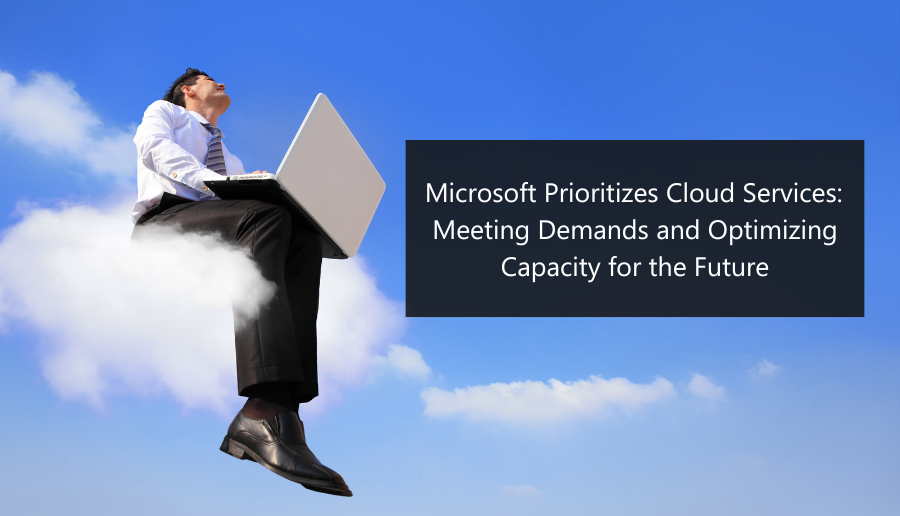Today there’s a need to prioritize Microsoft Cloud services. This is especially important in light of what happened to those on the front line of the COVID-19 Coronavirus pandemic: first-responders, healthcare workers, and all others involved. The need is to keep capacity issues in check so they meet demands.
For that reason, Microsoft officials play dual roles; while they are “continuing to expand the company’s worldwide data-center footprint,” they also need to prioritize Azure Cloud capacity. For example, new Azure subscriptions will have limits. A blog post, written by Microsoft officials, ensure a “near-instant capacity buffer within the data centers, and hold additional infrastructure buffer warehoused, ready to ship to regions with [a higher than usual] demand.” The post continues with a word to existing customers, that restrictions won’t show up because they already have a defined quota of services to access.
Capacity issues started months before people started working from home because of the pandemic. Different regions made note of capacity issues. Microsoft has steps in the works to rectify the capacity problems. The Microsoft officials have posted steps to help meet Cloud needs.
Optimizing and Load Balancing
This step manages growth while also allotting the capacity needs of the company.
Server Capacity
In areas that are facing constraints, Microsoft adds more server capacity.
Approving Backlog
The backlog of requests from customers, to meet their quotas, is being addressed. Microsoft expects to have this completed in the first half of 2020.
Remove Restrictions
Microsoft will remove restrictions for new subscriptions in several regions.
Refining Azure Models
Future forecasting is big with Microsoft. They always refine Azure models to add capacity. As the most popular worldwide Cloud service, Microsoft wants the Azure Cloud to stay on top. That’s their ongoing goal. As Scott Guthrie, Executive Vice President of Microsoft Cloud and AI Group tells Forbes in an interview that they see Azure “as an equalizer.” More often now, impressive companies look to be global companies. An equalizer happens when “a company and country expand outside their region.”
Azure managed services ideal for ‘hybrid’ transitioning.
Companies on the verge of buying that new server, or building out their existing data center, may benefit in the long term if they consider the offerings of Azure managed services.
The three basic hosting models.
While one of the many benefits of migrating to the cloud is the savings in capital expenditures, such as foregoing hardware purchases, Azure hosting services provide on-demand services around three basic “delivery models” of cloud computing.”
More importantly, all programs and applications are managed by Asure, who makes sure upgrades and security patches are completed in a timely manner—with minimal disruption in service!
— SaaS: Software-as-a-Service makes using applications inexpensive. Programs reside in the cloud and not on-premise.
— PaaS: Platform-as-a-Service functions ideally for developers. Quick scalability of projects and includes an operating system, web server and a database.
— IaaS: Infrastructure-as-a-Service provides multiple users with a virtual platform (ZDNet: more computing capacity and fewer servers) for data storage, virtualization, servers, and networking.
Forbes: The best way to migrate to the cloud? “Gradually.”
Companies with their own data center, or operating with multiple on-premise servers, should avoid an all-in-at-once strategy, notes the Forbes Technology Council:
“The most intelligent way to migrate…to a public cloud-based one is by gradually assessing which data and workloads to move and moving each of them individually. This will take time, during which yours will be a hybrid environment.”
Paying for the transitioning…
Costs, in most cases, can be minimized simply by reallocating un-renewed maintenance contracts “on outdated storage gear,” or reassigning dollars for new servers to the migration process.
One of the biggest negative impacts on mapping a successful migration strategy is to overlook “potential costs like data management,” or other charges “insufficiently examined or considered.”
Visit our website’s solutions to learn more about our solutions in order to further your understanding of financial and business management systems. Team up with a certified Microsoft Gold Partner to make your migration to the cloud seamless. For more information on either Microsoft’s steps to meet Azure demands or future forecasting, contact us.
Don’t forget to follow us on Facebook, LinkedIn, and Twitter. Subscribe to our YouTube channel for insightful tutorials and demos.






